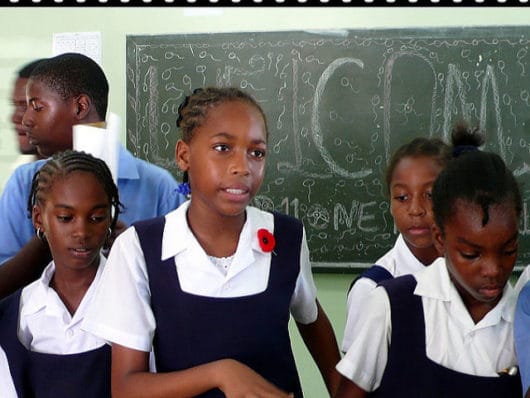Girls’ Education in St. Vincent and the Grenadines

Education System in St. Vincent and the Grenadines
Due to the colonial history of the nation, the education system differs in pre- and post-colonial rule. While the pre-colonial education system was built around the system of the power, the post-colonial education system is based less on “true” education. Education should be about learning about the world, the nation and everything that encompasses it, for the sake of knowledge. The education system in St. Vincent and the Grenadines is based less on this concept and more on the creation of a sense of pride or for the creation of workers for the international market.
Education in St. Vincent and the Grenadines differs greatly from other places around the world. Primary education is free, but as students move on to secondary, post-secondary or tertiary school, they must pay fees. Education is also not compulsory, meaning that children are not required to go to school. This is often used as an indicator of pervasive child labor that exists in St. Vincent, and this may affect girls unevenly and be reflected in their representation in schools.
Girls’ Education in St. Vincent and the Grenadines
In 2017, 138 girls were not in school, compared to 71 boys. Net enrollment rates for pupils were approximately the same, standing at 93 percent for girls compared to 93.9 percent for boys. However, female completion of primary school was about 6 percent lower in 2017 since around 87 percent of girls completed primary school compared to almost 93 percent of boys that achieved the same feat.
Girls’ education in St. Vincent and the Grenadines also suffers slightly when examining secondary schooling. While the disparities are not as severe, there is still an almost 2 percent difference in the enrollment of boys and girls in lower secondary school. In this level of education, approximately 3,000 female students and 3,600 male students are enrolled. Interestingly, this is not the case in upper secondary schooling, where there are more female pupils than male pupils, approximately 1,900 girls compared to 1,700 boys. This may be due to the fact that male students have a larger dropout rate when in lower secondary school, 9.4 percent compared to 2.6 percent of girls.
Need for Girls’ Education
After secondary school, there is a large gap in girls’ education in St. Vincent and the Grenadines in vocational fields, but not, however, in post-secondary (non-tertiary) education. In 2005, there were only 130 female students enrolled in a vocational program, which is almost doubled by the number of male students, 257. In comparison, approximately 1,400 girls were enrolled in post-secondary non-tertiary education, a track that prepares students for tertiary schooling, doubling the approximate 700 boy students enrolled.
It is plain that girls can thrive in educational settings and successfully continue their schooling when given an opportunity. While these gender disparities are not overwhelming, they must be fixed. In order to have the strongest country possible, girls must be able to fully participate in every part of life, and the prioritization of girls’ education in St. Vincent and the Grenadines is necessary to do so.
There has been a significant improvement in the educational attainment of girls in St. Vincent and the Grenadines, and this is in part due to efforts by the national government in cooperation with UNESCO. There are also various educational suppliers that aim to provide school materials and teaching equipment to teachers and pupils such as Bequia Bookshop, One Percenter, and Nightingale Co, Ltd. Hope is not lost for girls’ education, and although it will require work from all parts of the world, it is already changing and will be improved more comprehensively with the involvement of various organizations and the government.
– Isabella Niemeyer
Photo: Flickr
